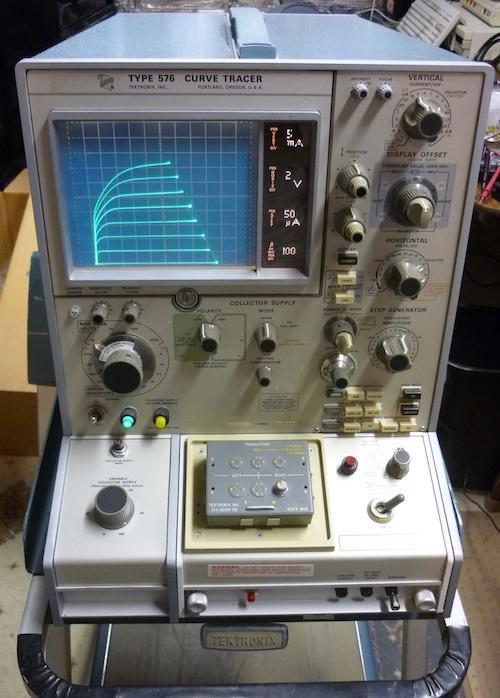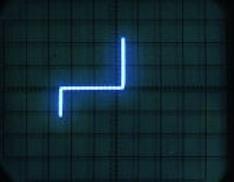There was a time when it wasn't so rare to discover an unusual, scope-like object in an electronics lab. This was the curve tracer, able to display detailed characteristic curves of many components.
Early models displayed vacuum tube curves; later ones were of course aimed at measuring transistors, diodes, and other solid-state devices. Plug-ins for Tek 5000- & 7000-series scopes were also made; all of these are still prized on the surplus market.
 |
||
| A Tek 576 displaying a family of curves. (Source: Dutchtronix). | ||
A curve tracer, at its simplest, displays a V-I graph of the DUT, most easily demonstrated by a diode plot.
 |
||
| A zener diode curve. (Source: Tom Gootee). | ||
One doesn't need a very fancy circuit to trace out a diode's characteristics – an AC source and a resistor might be enough, though checking the reverse breakdown of a 1,000 V 1N4007 might call for greater effort.
Where curve tracers come into their own is in measuring three-terminal devices, such as BJTs, FETs, SCRs, and so on. Here, two parameters are simultaneously varied (such as base current and collector voltage), and one is measured (probably collector current). This results in a whole family of curves, as shown on the Tek 576 above.
Why bother? If you're a semiconductor manufacturer, accurate device characterization is probably something you care about. However, the average lab doesn't have much use for such a piece of gear. Some audio manufacturers still use curve tracers to help closely match pairs of transistors, or, yes, vacuum tubes. Can you think of other areas where curve tracers would be useful?
Personally, it's been a long time since I've used a curve tracer. If you've used one, tell us about it. And what would you use one for today?
